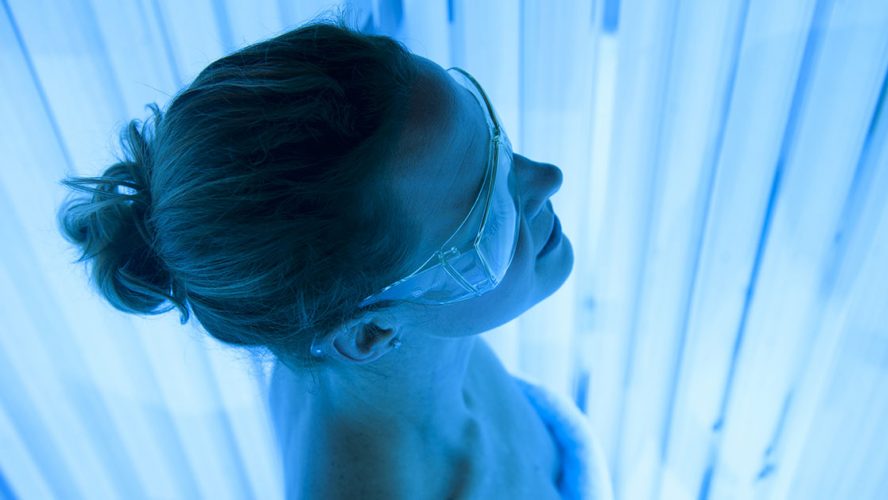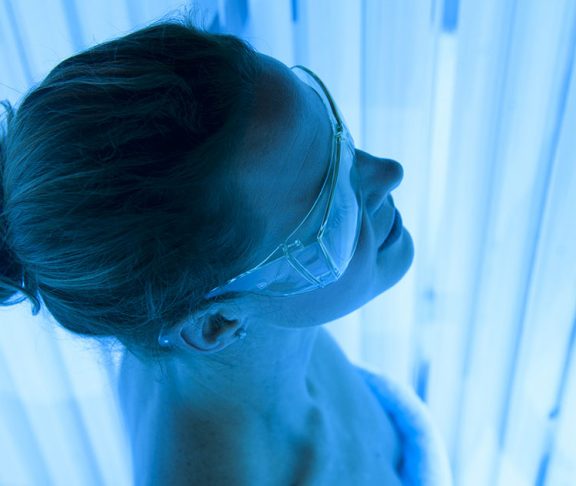Phototherapy is a treatment that uses ultraviolet light to treat a variety of skin disorders, including vitiligo, psoriasis, and eczema. David Swanson, the CEO of Daavlin, a leading manufacturer of phototherapeutic products, has long championed the benefits of phototherapy. For psoriasis, continued treatment can effectively clear the skin.
“Recent studies show that 70 percent of patients cleared in an average of 58 days when treating three times a week with phototherapy,” Swanson said.
Light therapy units vary to best serve the needs of patients, from single ultraviolet lamps to treat smaller affected areas, to full body cabinets for those with more severe conditions.
“Patients can be treated using phototherapy in a clinic or dermatologist’s office,” Swanson said, “or a patient can be treated in the comfort of his or her home.”
Minimizing side effects
Dermatologists most commonly prescribe Narrow Band UVB phototherapy, which treats the skin with a small portion of the ultraviolet spectrum, enhancing the therapeutic nature of the light and reducing side effects.
“Narrow Band UVB phototherapy is considered a first-line treatment for these conditions,” Swanson said. “It’s safe enough for pregnant women, children, and the immunocompromised to use, and doesn’t have the serious side effects associated with biological drug therapies. ”
Phototherapy is not, however, a permanent treatment, and requires regular sessions.
“While in active treatment, patients are typically treated two to three times per week,” Swanson said. “The dosage of light or time spent in treatment will depend on the patient’s skin type and condition. After a patient is clear, many dermatologists will prescribe weekly maintenance therapy to prevent the skin condition from returning.”
Taking precautions
As with any treatment, there are recommended precautions and guidelines to increase effectiveness, for which Swanson offered some advice.
“New guidelines recently released by the Joint Academy of Dermatology recommend that patients apply a thin layer of emollient before treatment, and wear UVB-blocking goggles during their treatment,” he said.
Phototherapy may seem costly at first but it provides an affordable treatment option over time.
“In-office phototherapy treatments or the one-time cost of a home unit are reasonably priced, and covered by Medicare and most insurance companies,” Swanson said. “Other treatments, such as biological drug therapies, can cost more than the price of the average car.”
A patient testimonial
“The treatments are working. I am only in Week 4 and the plaquing is less and my feet don’t look as red. I even have one tiny area where the skin already looks almost normal!
“Usually heat really flares things up, and I was in Sacramento for three days this week and the temps were up to 106. My feet did pretty good, which is miraculous! I took my lights with me and did a treatment so I could stay on schedule.” – H.T., Reno, Nevada
Ross Elliott, [email protected]

